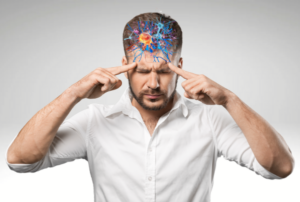 Brain Plasticity – Adaptive or Maladaptive?
Brain Plasticity – Adaptive or Maladaptive?
by Jocelyn Tomaka, PhD
Our brains remain plastic throughout our lifespans, meaning they are constantly changing, in coordination with the body, depending upon the environment (Dinse, 2021). We make new ties and break old ties among our neurotransmitters that communicate essential information that keeps us alive and moving. When our brains (and our accompanying nervous system) change in healthy ways that allows us to function well and thrive, this is considered adaptation. Conversely, when our brains change in ways that disallow us from functioning well or thriving, we refer to this as “maladaptation,” and this is where we encounter problems (Perrotta, 2021).
When we experience maladaptation (i.e., dysregulation or impairment), this is often when we need help. This presents as addiction, mood disorders, traumatic stress, personality changes, or even deficits in cognition and memory, all in both quotidian and profound ways. The suffering that can accompany such states is often temporary, however, because of the adaptable nature of the brain. It can reform itself in an adaptable, healthy way through the power of appropriate therapeutic methods (Pasqualitto, Panin, Maidhof, Thompson & Fachner, 2023; Steffen, Hedges & Matheson, 2022).
Therapeutic methods are also important toward the conservation and support of a healthy, adaptive mind and body, as well. Music therapy, for example, promotes positive neuroplasticity. It affects how we process information, memories, and emotions in unique ways that coordinate both the recovery of diseased states and improvement of healthy states through its restructuring of the brain and nervous system (Chatterjee, Hegde & Thaut, 2021; Zaatar, Alhakim, Enayeh & Tamer, 2023).
Therapists and therapeutic tools help guide the neuroplastic brain toward building healthy connections within itself and the nervous system, which then enables the sustainment of a healthy state or remediation of impairments. The plastic nature of our minds and bodies offers us remarkable potential toward healing and thriving.
References:
Chatterjee, D., Hegde, S., & Thaut, M. (2021). Neural plasticity: The substratum of music-based interventions in neurorehabilitation. NeuroRehabilitation, 48, 155-166. DOI:10.3233/NRE-208011
Dinse, H. R. (2021). Neuroplasticity in humans. In M. L. Zeise, (Ed.), Neuroscience for psychologists: An introduction (pp. 193-230). Springer. https://doi.org/10.1007/978-3-030-47645-8_7
Pasqualitto, F., Panin, F., Maidhof, C., Thompson, N., & Fachner, J. (2023). Neuroplastic changes in addiction memory—how music therapy and music-based intervention may reduce craving: A narrative review. Brain Sciences, 13(2), 259. https://doi.org/10.3390/brainsci13020259
Perrotta, G. (2021). Maladaptive stress: Theoretical, neurobiological and clinical profiles. Archives of Depression and Anxiety, 7, 001-007. Retrieved from https://www.neuroscigroup.us/articles/ADA-7-157.pdf
Steffen, P. R., Hedges, D., & Matheson, R. (2022). The brain is adaptive not triune: How the brain responds to threat, challenge, and change. Frontiers in Psychiatry, 13, 802606. https://doi.org/10.3389/fpsyt.2022.802606
Zaatar, M. T., Alhakim, K., Enayeh, M., & Tamer, R. (2023). The transformative power of music: Insights into neuroplasticity, health, and disease. Brain, Behavior, & Immunity – Health, 35, 100716. https://doi.org/10.1016/j.bbih.2023.100716
Jocelyn Tomaka, PhD, is an Industrial-Organizational Psychologist leveraging neuroscience toward building successful companies and technologies, also working in forensic psychology with advance care planning. Connect with Dr. Tomaka.
